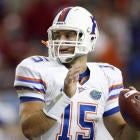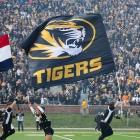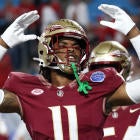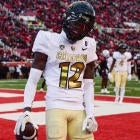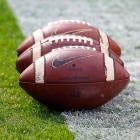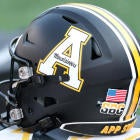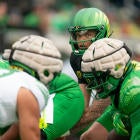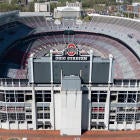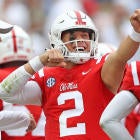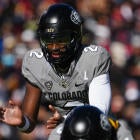
We are in the midst of one of the wildest offseasons of the transfer portal and name, image and likeness (NIL) era, seeing not just the usual waves of player mobility but also the feeding frenzy for rosters in the wake of post-College Football Playoff coaching changes at Alabama and Washington.
With transfer portal movement and the opportunity to benefit from NIL very much at the center of the conversation in college football, we at the Cover 3 Podcast decided to spend some time going down memory lane through the sport's history.
Who, we wondered, would have benefited from the modern transfer portal and NIL era?
While it was not the intent from the start, one aspect of this discussion became clear: The era of players who could have cashed in on NIL didn't really begin until the true explosion of college football on a national scale. Cover 3's Danny Kanell mentioned that when he was going through the recruiting process, it was a selling point that a program had six whole games on television. But by the mid-to-late 1990s (and certainly around the turn of the century), the stars of college football were benefitting from the explosion of cable television and highlight culture. They were not, however, benefiting financially as they may have been if the same NIL rules were in place in that time.
So who were some of the players who could have cashed in? What players may have been able to not only capitalize on NIL but the free agency-style bidding wars available for the transfer portal? We dug into that, and here were some of our responses. You can also listen to the episode in which we discuss these players below:
Tim Tebow, QB, Florida
No conversation of marketability in college football can start anywhere other than the former Florida quarterback, who was a household name long before his heralded career came to a close.
"He was really impactful as a freshman in those sub packages, he won the Heisman Trophy as a sophomore so then he's a returning Heisman winner," Bud Elliott said. "I just wrote down one name, to me it's Tebow by a mile."
One corner of the "stars who could have cashed in on NIL" discussion focused mostly on players who were more successful in college than in the NFL. Tebow falls into that category, but not as much as some of the other names mentioned — Tommy Frasier and Eric Crouch, for example — because he remains a marketable star even today. Consider the media craze that Tebow's last NFL training camp appearances, or even his foray into minor league baseball, created. He was larger than life at Florida, remains a star in sports today and certainly would have been able to cash in on NIL during his playing days.
Cam Newton, QB, Auburn
This is where NIL and the transfer portal factor in as part of the discussion, since Newton potentially would have had multiple bites at the apple when it came to programs making NIL-related pitches. There would have clearly been opportunities for him to benefit from NIL at Florida, but then as a talented backup behind Tim Tebow, Newton would have attracted attention from other top programs if he entered the transfer portal. Maybe his JUCO days at Blinn never happen if Newton enters the transfer portal and sparks an NIL-related bidding war for the future Heisman Trophy winner. Of course, those potential NIL opportunities pale in comparison to the financial gains of a pro career that included an MVP season, three Pro Bowls, Rookie of the Year honors and a multitude of sponsorships and advertising opportunities.
Brian Bosworth, LB, Oklahoma
The conversation mostly focused on those years in the 1990s and 2000s that tracked with college football's explosion in the national consciousness, but Tom Fornelli delivered an excellent assessment of how the two-time All-American from Oklahoma could have benefited from the NIL era.
"Brian Bosworth was a social media superstar 40 years before social media existed," Fornelli said.
Yes, with wild hair and vocal opposition to the NCAA, you could say that "The Boz" created trending topics before we were tracking such things. He controlled the conversation, created intrigue in his off-field endeavors as well his on-field success, and he would have gotten plenty of financial opportunities through NIL throughout the state of Oklahoma.
Randy Moss, WR, Marshall
If we set aside the circumstances that brought Moss to Marshall in the first place, we can easily spot a situation that would have been similar to what we see at Group of Five programs today: A star has a breakout season early in their career, then with opportunities to play for bigger programs and potentially make more money in NIL, they enter the transfer portal and are eligible to contribute immediately. Moss had 28 touchdown catches in his redshirt freshman season at Marshall in 1996, and he would have generated an immense amount of interest from schools more than happy to look past the legal issues that had him dismissed from Florida State.
"If you actually had Randy Moss sitting at Marshall, the bidding war for Randy Moss to get his sophomore or junior season would be [huge]," Elliott said. "Could you imagine the bag Randy would have got?"
Any Notre Dame quarterback
"Ron Powlus would have made a lot of money," Fornelli said. "Any Notre Dame quarterback during the era when they were kind of stuck in purgatory. They would have all cashed in because they would have had the support of Notre Dame boosters and they would have had the desire to be like 'Please, for the love of God, get us back to glory.'"
We also discussed similar opportunities that may have been there for our CBS Sports HQ colleague Brady Quinn, the program's all-time career passing leader.
Highlight reel superstars
The rise of cable television and specifically sports-focused programming made highlights a big part of notoriety in college football. Michael Vick's highlights from Virginia Tech put the Hokies, and Vick, in the sport's spotlight around the turn of the century. Reggie Bush won a Heisman Trophy as the most electric piece of a loaded title-contending USC team in the mid-2000s. But then the highlight-reel era took on a new life with the explosion of YouTube and other social media video services. A wider net was cast, and it allowed players like Pat White, Steve Slaton, Denard Robinson, De'Anthony Thomas and more to become superstars in college football largely on the popularity of their highlights, which could now be easily shared online.












